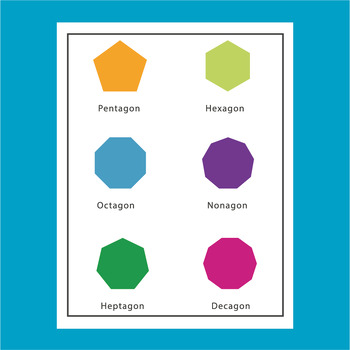Get to know the Pentagon family, enjoy coloring them, and finally learn to draw
Description
Shapes are like the building blocks of everything you see around you! They are the different outlines or forms of objects and things. Think of them as the special way things look. You know how a pizza is round like a circle, and a piece of toast is square like a book? Those are shapes! So, shapes are all about how things are shaped, like circles, squares, triangles, and many more. Shapes are super cool because they help us understand and talk about the world.
Understanding shapes is important for children's knowledge development in several ways:
Visual Recognition: Learning about shapes helps children recognize and distinguish objects based on their form. This recognition is essential for everyday tasks, like identifying road signs, fruits, or toys.
Spatial Awareness: Shapes teach kids about space and how objects relate to one another. It helps them understand concepts like inside, outside, above, below, beside, and between.
Geometry Foundation: Shapes are the foundation of geometry, a branch of mathematics. As children learn about shapes, they lay the groundwork for understanding more complex geometric concepts in the future.
Problem Solving: Recognizing and manipulating shapes can be a fun way for kids to develop problem-solving skills. For example, when they try to fit puzzle pieces together or build with blocks, they're using spatial reasoning and critical thinking.
Artistic Expression: Shapes are fundamental in art and design. Teaching children about different shapes can encourage their creativity and help them express themselves through drawing, painting, and crafting.
Mathematics Readiness: Learning shapes is often an early math skill. It can help children prepare for more advanced math concepts, such as symmetry, measurement, and angles.
Language Development: Talking about shapes and their characteristics (like saying a circle is round or a square has four equal sides) enhances a child's vocabulary and language skills.
Social Interaction: Shapes are common themes in books, games, and activities designed for young children. This shared knowledge can facilitate social interactions and play with peers.
In summary, shapes play a crucial role in a child's cognitive, mathematical, artistic, and social development. They provide a foundation for understanding the world and preparing for more advanced learning in various subjects.





